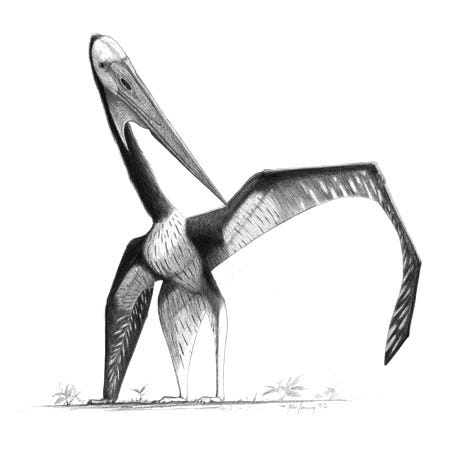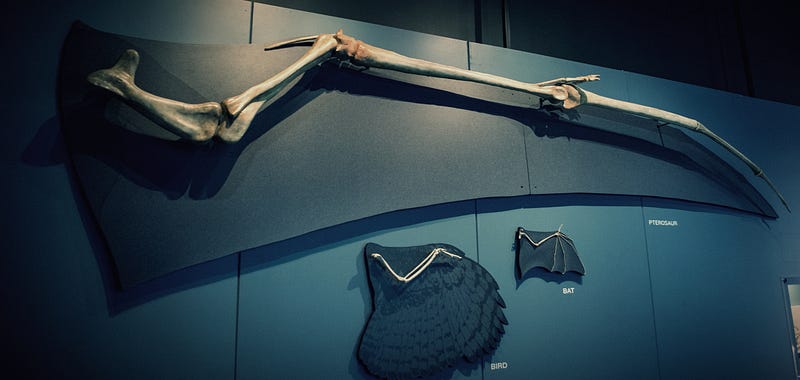# Tree-Dwelling Reptiles Illuminate Pterosaur Evolutionary Roots
Written on
Chapter 1: Introduction to Pterosaur Evolution
Pterosaurs, the famed flying reptiles of the Mesozoic Era, are notable for being the first vertebrates to achieve powered flight. Some species boasted wingspans exceeding 10–11 meters (33–36 feet). However, the evolutionary beginnings of these creatures remain largely a mystery. One significant challenge in tracing their origins lies in the fragile nature of both pterosaurs and their ancestors. Their anatomical adaptations for flight—such as lightweight, hollow bones—rendered them particularly susceptible to the conditions that facilitate fossilization. Consequently, paleontologists often encounter difficulties in locating the ancestral forms of these extraordinary reptiles.

Chapter 2: Insights from Recent Research
A recent investigation led by Martín Ezcurra, a paleontologist associated with the Bernardino Rivadavia Natural Sciences Museum in Argentina and the University of Birmingham, offers new perspectives on pterosaur evolution. Ezcurra and his team propose that a group of small, tree-climbing reptiles known as lagerpetids may bridge a 28-million-year gap in the pterosaur lineage, providing clues about what their ancestors might have looked like.
Section 2.1: The Lagerpetidae Group
The Lagerpetidae group comprised reptiles that thrived between 236 and 212 million years ago, during the Late Triassic Period. Fossils from these intriguing animals have been discovered in regions such as Argentina, Arizona, Brazil, Madagascar, New Mexico, and Texas. Initially, these reptiles were considered early members of the dinoauromorphs, suggesting a closer relation to dinosaur precursors. However, further analysis indicates that their anatomical traits might make them more fitting candidates for the pterosaur lineage. Kevin Padian, a paleontologist at the University of California, Berkeley, notes, "Their slender limb proportions and back shape align well with a bird-like body structure."

Section 2.2: Neuroanatomical Similarities
Additionally, lagerpetids and pterosaurs share similarities in their brain and inner ear structure, suggesting that flight-related abilities—such as the coordination of head, eye, and neck movements—may have developed while their ancestors remained terrestrial. Ezcurra comments, "The neuroanatomical traits found in lagerpetids, previously associated with the emergence of flight in pterosaurs, imply these features existed before flight evolved and were later utilized by pterosaurs to dominate the skies."

Chapter 3: The Mystery of Wings
Despite the similarities in brain structure and agility-related features, lagerpetids do not possess a defining characteristic of pterosaurs: wings. Pterosaur wings formed from a membrane of skin, muscle, and other tissues, stretching from elongated fourth fingers to their ankles. The main arm bone, the humerus, featured a pronounced crest for muscle attachment.

To further understand the evolutionary journey, scientists face the challenge of locating earlier pterosaur fossils or intermediates that exhibit transitional features between lagerpetids and pterosaurs. Dr. Ezcurra expresses hope for discovering such forms: "Finding a more intermediate species between lagerpetids and pterosaurs, which would show a gradual evolution of flight-related traits, would be fascinating."
Chapter 4: Conclusion
Pterosaurs dominated the skies for over 150 million years, evolving into numerous forms and sizes. They ultimately went extinct alongside non-avian dinosaurs during the Cretaceous-Paleogene Mass Extinction event approximately 66 million years ago. The earlier chapters of their evolutionary narrative remain unclear, but the re-evaluation of the tree-dwelling lagerpetids could provide vital insights into the ancestral lineages that led to these incredible reptiles.
Further Reading
Azhdarchids: The Largest Creatures to Fly
Discover the titans of the Cretaceous skies.